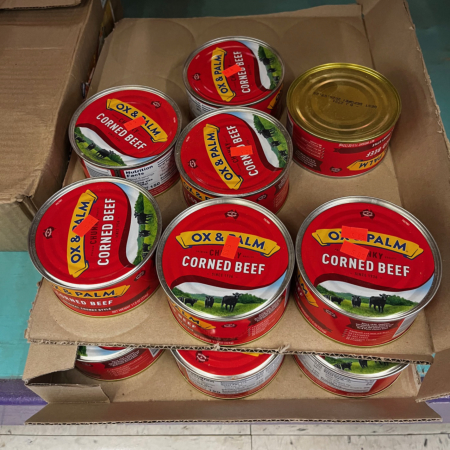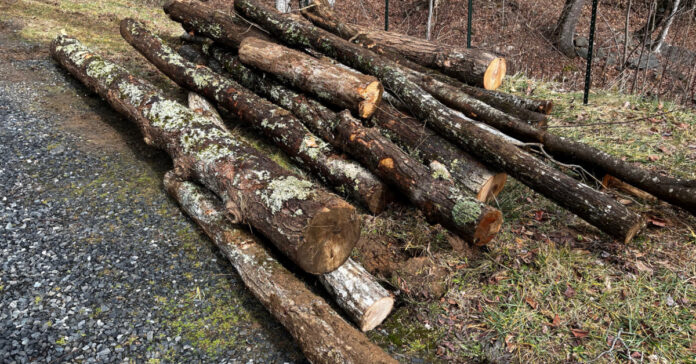I don’t know what meteorologists say from a technical standpoint, but from my perspective on the ground, the first week of February marks the middle of winter. So we’re halfway through; we just don’t know if we’ve seen the easy half or the difficult one. Time will tell.
The very last bit of snow, which was tucked away in a shady corner, has melted and we are supposedly looking at a week of average winter temperatures with minimal precipitation. That means temps in the 20s at night, but likely rising above freezing on sunny days.
I have met a few people who think (or perhaps hope) winter is over, but I doubt it. We often see more snow in February than in January, and cold spells in March are to be expected. We had one last year that killed one of my beehives, which, until that day, had survived the winter. So far, all six of my beehives have survived. I had bees flying recently on a warm day, but it’s too early to celebrate.
As the temperatures moderate, we burn less firewood than we did in the middle of the deep freeze. That’s welcome since we are at least halfway through this year’s supply of firewood. We’ll see how it holds up. The real question is, will we have to burn wood we received in December? I would prefer to let it season for until the fall, but we’ll burn it in April or May if we have to.
A neighbor who did some work on his property gave us a dump truck load of tree trunks I will cut and split. We expect another load in March. I can’t argue with free firewood, nor am I one to look a gift log in the bark.
Water, Water Everywhere
We continue to have a high water table with run off filling the streams. Even one streambed that usually only has water in it after it rains is running full time now. As a guy who counts on spring water for drinking, I can’t complain. The more melting snow percolates through the ground and into the veins, pockets and pools of underground water, the better.
In California, they have been dealing with a series of atmospheric rivers that are bringing in storms and heavy rain. People act like this is a recent phenomenon, but it’s not. They may have forgotten about these storms during the recent drought, but the old “Pineapple Express” has been bringing moisture from the general area of Hawaii to California and points north since before Lewis and Clark first saw the Pacific Ocean. While these storms may cause flooding in coastal cities, they will add to the snowpack in the Sierra Nevada and other regions, which will mean more water in streams, rivers and reservoirs in the summer. Approximately 30 percent of water used in California comes from the snowpack. The west needs these storms, even if they cause some flooding in low-lying areas.
When I look at the drought monitor, almost the entire West Coast is drought free, and there are only a few scattered pockets of extreme or exceptional drought cross the country. I expect some of those may clear up as these Western storms cross the country, bringing rain with them. That bodes well for farmers and spring planting.
Everyone is Healthy Again
It seems like the RSV, cold, flu and COVID cases that sickened so many people around here peaked in late December. I haven’t had a meeting canceled since I was under the weather in the second week of January. We’ve also started re-engaging socially, with two dinners-with-friends this week and a brunch this weekend. I don’t know if the sub-zero temperatures killed the virus or if everyone getting snowed in stopped its spread, but we’re all happy to have it behind us.
You’ll also notice that RSV and COVID stories have died down in the media, leading me to believe this is a national trend. For whatever reason, it was an early flu season this year.
More Stocking Up
While in a town I rarely go to, we visited a salvage grocery store I hadn’t been to for at least six months. Our best find was the large cans of Bush’s Baked Beans for $1 each. I also found a brand of corned beef I had never seen before in an unusual container. On closer inspection, Heinz made it in Australia. (Brands usually import corned beef from South America.) No idea how it ended up here. It was more expensive than I like, but we’ll try a can.

We also added a few items to our freezer, but it wasn’t what I would call a “haul,” more of an opportunistic topping off, taking advantage of their lower prices.
While on our trip, I replenished our supply of chicken feed with four more bags. The chickens ate almost twice as much food during the coldest days and have only just returned to consuming their “normal” amount of feed. I have also been giving them twice as much water to ensure they do not run out. While I am not yet able to use the hose, at least I don’t have to water them twice per day in this weather.
We are averaging 18 eggs per day, or 12.5 dozen per peek, so perhaps it is fair to expect them to consume more food with that kind of output. As long as we sell four or five dozen eggs per week, we break even on their feed. The rest of the sales go to pay for the food they ate in the six months before they started laying. I doubt we will start showing a profit on our eggs until late summer.







